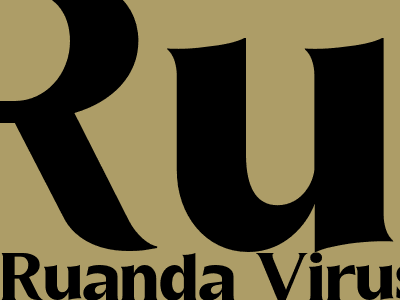Ruanda Virus: A Comprehensive Guide to Understanding, Prevention, and Treatment
Introduction:
The Ruanda virus, a member of the Bornaviridae family, is a deadly pathogen that primarily affects livestock, causing severe respiratory and neurological symptoms. This virus has raised concerns among the veterinary community due to its potential implications for animal health and the livestock industry. In this comprehensive guide, we will delve into the complexities of the Ruanda virus, exploring its transmission, clinical manifestations, diagnosis, prevention, and treatment strategies.
Transmission:
The Ruanda virus is primarily transmitted through direct contact with infected bodily fluids, such as saliva or nasal discharge. Animals can also become infected through exposure to contaminated surfaces, equipment, or bedding. The virus is highly contagious and can spread rapidly within a herd, posing a significant threat to livestock populations.
Clinical Manifestations:
Infection with the Ruanda virus can lead to a wide range of clinical symptoms, varying depending on the species affected. In cattle, the virus typically manifests as an acute respiratory illness, characterized by fever, coughing, and difficulty breathing. Neurological signs, such as tremors, ataxia, and head tilt, may also be present.
Diagnosis:
Diagnosis of the Ruanda virus is crucial for implementing effective control measures. Veterinary practitioners rely on a combination of clinical signs, laboratory tests, and epidemiological data to establish a definitive diagnosis. Serological assays, such as ELISA or immunofluorescence, are commonly used to detect antibodies against the virus, indicating exposure or infection.
Prevention:
Prevention of Ruanda virus infection is essential for safeguarding animal health and the livestock industry. Implementing comprehensive biosecurity measures, including quarantine protocols, thorough disinfection of premises, and isolation of infected animals, is paramount. Vaccination programs, using inactivated or modified live vaccines, are also effective in preventing the spread of the virus.
Treatment:
There is currently no specific antiviral treatment available for the Ruanda virus. Supportive care, such as providing fluids, antibiotics to prevent secondary infections, and anti-inflammatory medications to alleviate symptoms, is crucial for managing infected animals. In severe cases, mechanical ventilation may be necessary to support respiratory function.
Implications for Animal Health and the Livestock Industry:
The Ruanda virus poses a significant threat to animal health and the livestock industry. Outbreaks can lead to substantial economic losses due to animal mortality, decreased productivity, and trade restrictions. Furthermore, the virus can have a devastating impact on the livelihoods of farmers and communities reliant on livestock production.
Conclusion:
The Ruanda virus is a highly contagious and potentially deadly pathogen that affects livestock worldwide. A comprehensive understanding of the virus, its transmission, clinical manifestations, diagnosis, prevention, and treatment strategies, is essential for mitigating its impact on animal health and the livestock industry. Continued research efforts, technological advancements, and collaboration among stakeholders are crucial for developing effective control measures and safeguarding the health and well-being of our livestock.

Ruanda Virus
Comments